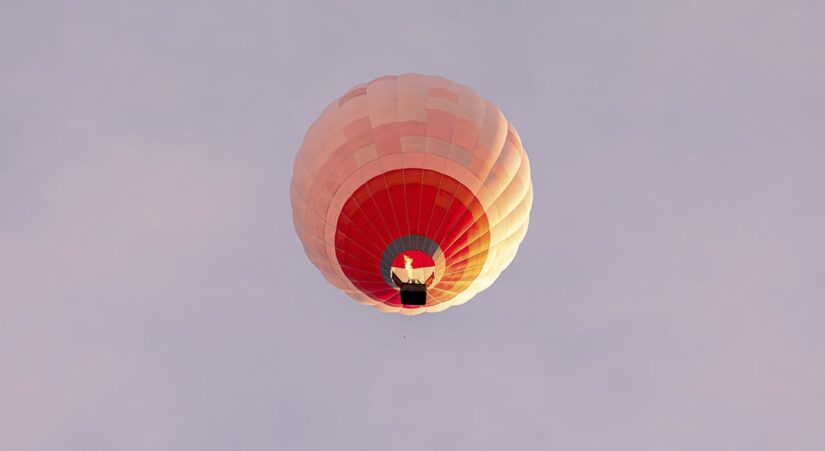Types of balloons
TYPES OF BLIMPS BY SHELL FILLING
HEAT aerostats (mongolfiers).
These are balloons whose lift is generated by hot air. In 1782, the French brothers Montgolfier built and lifted their balloon into the air. It had a spherical shape, a volume of 1 cubic meter, was filled with hot air and rose to a height of only 30 meters. Nevertheless, this flight is considered to be the first official flight of an aerostat in the world. From then on, all unguided balloons powered by heated air were called “mongolfiers” after the brothers.
GAS AIRSTATS (CHARLERS)
These are balloons whose lift is generated by lighter-than-air gases and their mixtures. On the 27th of August 1783, the French inventor Jacques Alexandre Charles successfully tested his balloon filled with hydrogen. In honor of the inventor, all balloons powered by hydrogen (as well as other gases and their mixtures) were referred to as “balloons”.
COMBINED AEROSTATS (ROSERS)
These are balloons which, in order to perform their flight, simultaneously use the power of heated air and a gas (gas mixture) lighter than air. They use two shells at the same time. This principle was invented by the French physicist Pilatr de Rosier. In honor of him they were named. The de Rosier balloon design had an upper spherical shell filled with hydrogen and a lower cylindrical shell filled with hot air. Unfortunately, the inventor and his assistant were killed during the test flight on June 15, 1785. In 1999 the Englishman Brian Jones and the Swiss Bertrand Piccard made the world’s first trip around the world in a rozier-type balloon.
TYPE OF BLIMP BY PURPOSE
FREE BALLOONS
These include all unguided balloons. They can be with or without crew and can be used for extreme recreation, sports, scientific and advertising purposes. A free balloon has a soft envelope and an open or closed gondola (for altitudes above 12 km).
TETHERED BALLOONS
They are basically the same as free balloons but are equipped with a rope with a winch attached to the ground. Because of this, if necessary, can adjust the distance from the balloon to the ground. Lifting height of the balloon with people on board – up to 2 km, without people – up to 8-10 km and more. Tethered balloons have a streamlined envelope with tail fins. They can be used for extreme recreation, as observation platforms, for training of parachutists, as well as for scientific and advertising purposes.
STRATOSTAT
It is a free balloon, designed for ascent to the stratosphere (over 15 km.). It is used, as a rule, for scientific purposes, less often for sports. It can be with or without a crew. It differs from conventional blimps by its large size and sealed gondola.
CONTROLLED BALLOONS (DIRIGIBLES).
The first flight of a controlled airship was made on September 24, 1852 by its inventor Henri Giffard. The blimp had a cigar-like shape, a propeller and a steam engine with 3 horsepower. It got its name from the French “dirigeable” – “controllable”. Airships were actively used in the past and they have good prospects for today. They are used mainly for tourism, passenger and freight transport purposes. Airships are subdivided according to the following main criteria:
by type of shell: soft, semi-rigid, rigid.
by type of propulsion system: with steam engine, with gasoline engine, electric motor, diesel engine and gas-turbine engine.
Type of propulsion: winged, propeller-driven, impeller-driven (paddle motor enclosed in a ring), jet-driven.
By the purpose: passenger, cargo and military.
BALLOON CLASSIFICATION
The FAI (Fédération Aéronautique Internationale) divides all aerostats into 16 classes. Each class is designated by a capital letter of the Latin alphabet. This includes the class of free aerostats designated by the letter “A” and airships by the letter “B”. The class of free aerostats (class A) is in turn divided into 5 subclasses, each of which consists of 15 categories (depending on the volume of the envelope).
AA – free balloons for which the lifting power is provided by a gas lighter than air.
AX are free balloons for which only hot air provides lift.
AM are free balloons for which lift is provided by heated lighter-than-air gas.
AS are free balloons having lift provided by a lighter-than-air gas and designed to inflate the envelope to such an extent as to have a noticeable effect on the characteristics of the balloon.
AT are free balloons which do not qualify for the first four subclasses.
